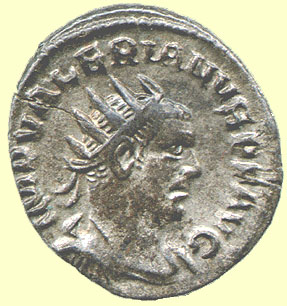 Contents -
Previous Article -
Next Article
Contents -
Previous Article -
Next Article
The coins vary in price over an extremely wide range. Because a coin is old does not guarantee that it will be expensive. You can get coins for as little as a dollar in some cases, but you can get ones that are in remarkably nice condition for as little as $15 in most dealer's shops. For $50, you can get most of the common ones after A. D. 260 in "uncirculated" condition. These are well struck up with a beautiful glossy brown patina on Fourth Century coins or with most of the silver plating intact on late Third Century pieces. For the collector of Late Roman coins there are several good references, though most are written for scholars and even the ones written for beginners do not provide introductory material to help the beginner make sense out of what he or she is seeing wen looking at these coins for the first time.
It must be remembered that these coins were meant to both serve as money, and to spread government propaganda (patriotic messages?) to people in all corners of the empire who spoke a wide variety of languages. Since few of the common people could read, the art on coins consisted of symbolic devices that carried a standard meaning. Also, the symbols and shorthand on coins were intended to convey meaning to the vast majority of the population who could not read. Lest the modern collector look at an image of a temple on a Roman coin showing both the inside and outside of the building, or a figure with oversize hands and come to the conclusion that the Roman mint artists were primitive, it should be realized that art on the coins was a sophisticated mode of visual communication. By grouping certain symbols together, a coin could convey a very complex message. The meaning of the symbols found on the reverses of Roman coins will be addressed in a further article.
Go to next article: The Beautiful Lady Who Started It All
Go back to previous article: Portraits of the Emperor and His Family